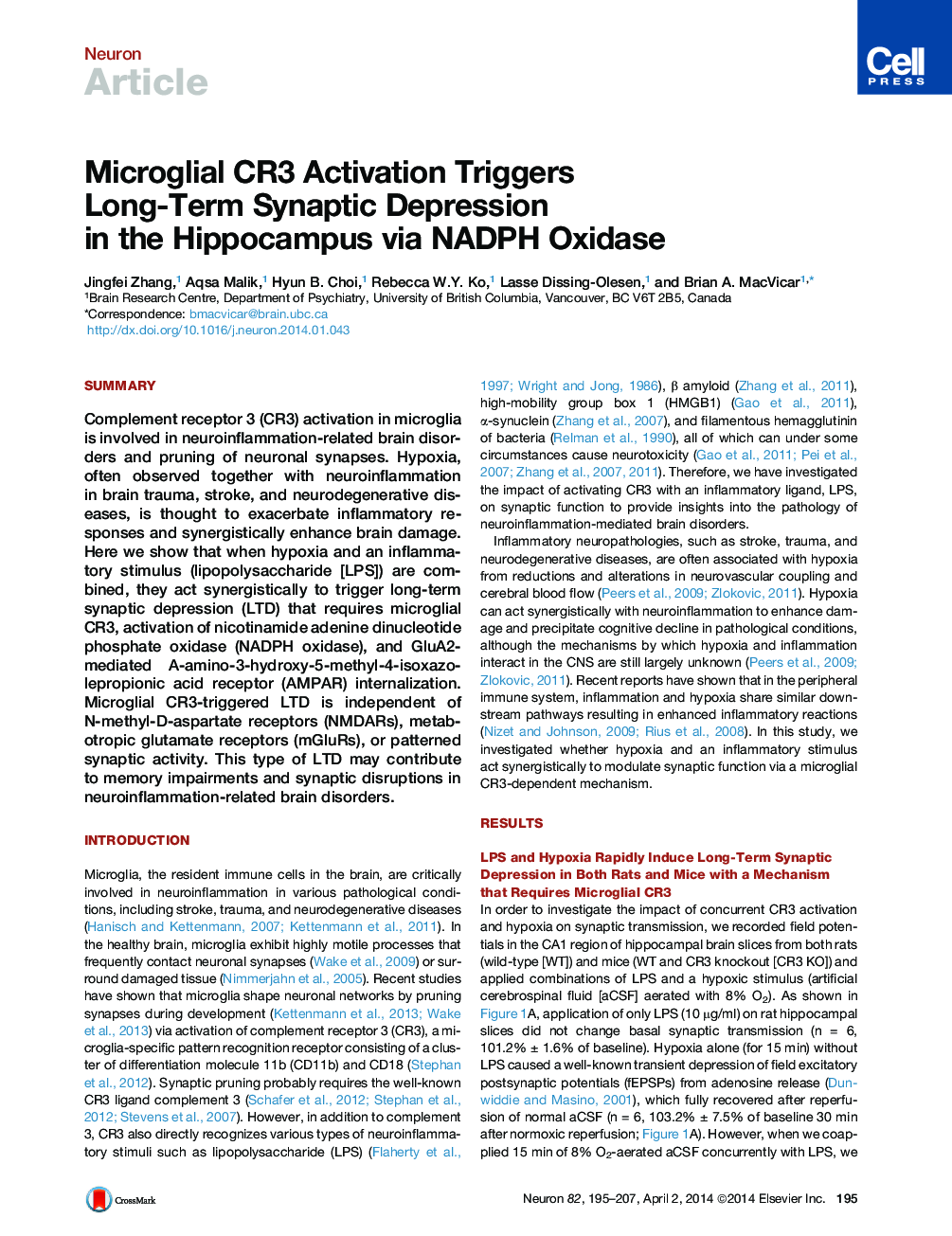| Article ID | Journal | Published Year | Pages | File Type |
|---|---|---|---|---|
| 4321091 | Neuron | 2014 | 13 Pages |
•LPS and hypoxia synergistically and rapidly induce LTD in hippocampus•The induction of LTD is dependent on microglial CR3 activation•This LTD is independent of NMDAR, mGluR, and patterned synaptic stimulation•NADPH oxidase activity and GluA2-mediated AMPAR endocytosis are required for this LTD
SummaryComplement receptor 3 (CR3) activation in microglia is involved in neuroinflammation-related brain disorders and pruning of neuronal synapses. Hypoxia, often observed together with neuroinflammation in brain trauma, stroke, and neurodegenerative diseases, is thought to exacerbate inflammatory responses and synergistically enhance brain damage. Here we show that when hypoxia and an inflammatory stimulus (lipopolysaccharide [LPS]) are combined, they act synergistically to trigger long-term synaptic depression (LTD) that requires microglial CR3, activation of nicotinamide adenine dinucleotide phosphate oxidase (NADPH oxidase), and GluA2-mediated A-amino-3-hydroxy-5-methyl-4-isoxazolepropionic acid receptor (AMPAR) internalization. Microglial CR3-triggered LTD is independent of N-methyl-D-aspartate receptors (NMDARs), metabotropic glutamate receptors (mGluRs), or patterned synaptic activity. This type of LTD may contribute to memory impairments and synaptic disruptions in neuroinflammation-related brain disorders.PaperFlick To view the video inline, enable JavaScript on your browser. However, you can download and view the video by clicking on the icon belowHelp with MP4 filesOptionsDownload video (15548 K)
